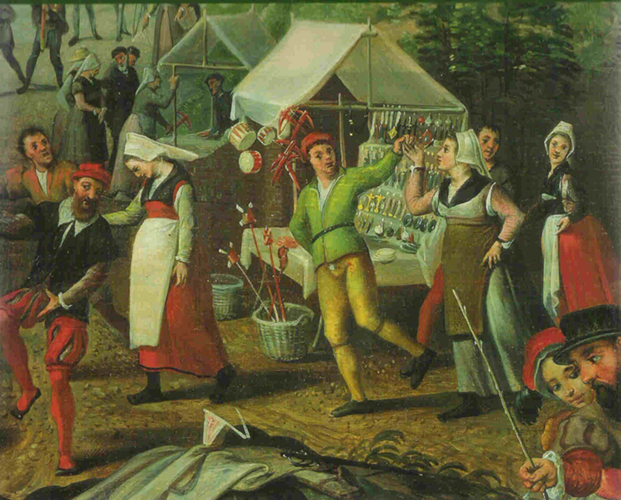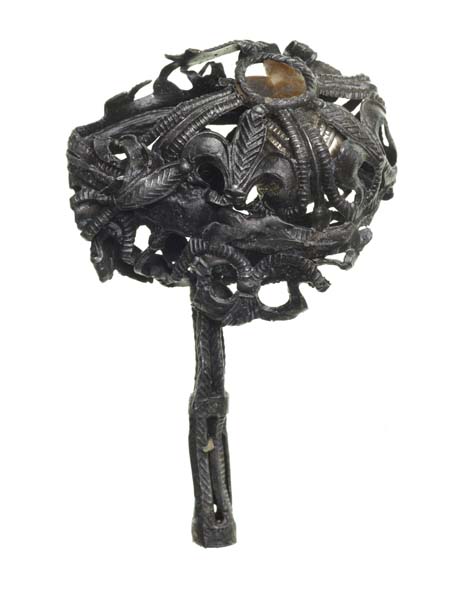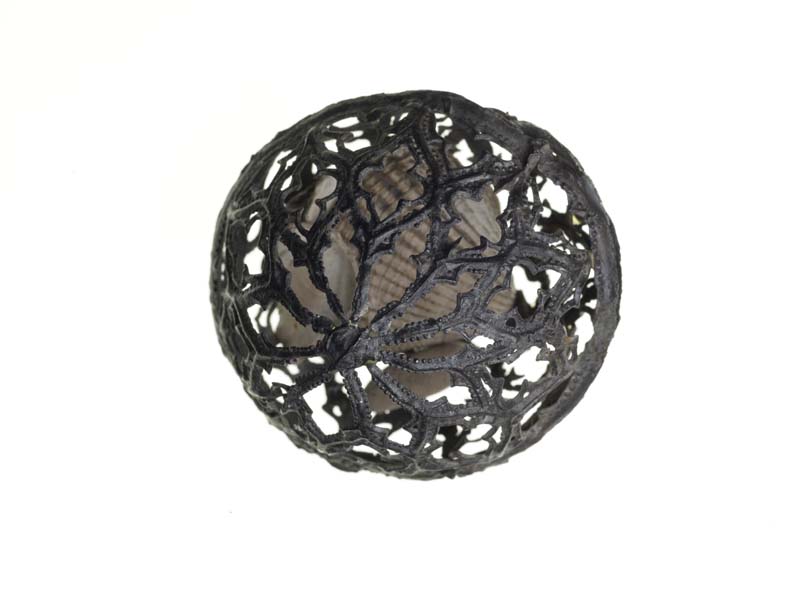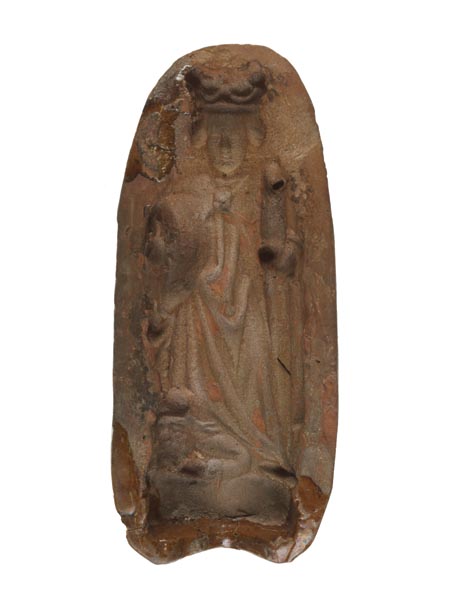The IHR’s Centre for the History of People, Place and Community has been carrying out some exploratory research on the potential of analysing London’s medieval customs accounts digitally. Detailed, or ‘particular’ customs accounts recorded immense detail about the goods and practices of trade, giving an unparalleled insight into the medieval material world and international networks. The challenge of these sources, however, is in their sheer scale, and their complexity. Eliot Benbow has been undertaking proof-of-concept work as part an IHR Internship.

Musées Royaux des Beaux-Arts de Belgique, Brussels.
Photo credit: Sarah Blick
I have studied many intriguing individuals in from the London customs accounts during my PhD, but one especially stands out. Frank Mathew (Matthewe, Mathewson) was a merchant, probably originally from the Low Countries or Germany, who cropped up in the customs accounts 13 times over 14 years (1477-1491). His shipments exemplify a pattern of trading that is characteristic across the accounts; importing the relatively cheap manufactured domestic goods from the Low Countries that increasingly adorned the homes of medieval Londoners.
Amongst the thirteen ships he transported cargoes on, three were from Antwerp, two from London and one’s home port was recorded as Bergen-op-Zoom. The home ports of the others weren’t recorded, but most are likely to also have been from London and Antwerp. Although not all of the surviving accounts routinely recorded ports of departure or destination, the home ports of these ships, and the goods they carried, indicate that he was mainly plying the cross-channel London-Antwerp axis. This route grew through the fifteenth century and became the primary focus of English trade, which had gradually moved away from Bruges.
Several of his shipments are well worth looking at in detail:
[23] De navi Copyn Welle vocata Trinitede Andwarpe eodem die [13 Nov. 1480]
De Frank Mathewe, alienigena, pro 1 parva cista et 1 hoggeshede cum 400 spice cakes, 500 stone Jhesus, 1½ dossenis Jhesus de boxe, 1 dossena locked glassz, 3½ dossenis parvorum powches, 2 dossenis whistels, 1½ rewmes paper depicti. Precii ………………………………………36s 8d
[Of Frank Mathewe, alien, for 1 small chest and hogshead (large barrel) with 400 spice cakes, 500 stone Jesus’, 1 ½ dozen Jesus’ of boxwood, 1 dozen looking glasses (?), 3 ½ dozen small pouches, 2 dozen whistles, 1 ½ reams of painted paper (possibly time woodcut printed images)
Valued…………………………………. 36s 8d.][33] De navi Johannis Yoman vocata Trinite Bulle eodem die [13 Nov. 1480]
De Frank Mathew, alienigena, pro 1 hoggeshede cum 8 rewmes [et] 17 quayers paper depicti, 1½ dossenis pannorum stayned, 485 coverynges pro pottes, 4 pow-ches, 4 yvery glassez, 2 dossenis parvorum cofers, 6 yvery pax bredes, 6 dosse-nis cultellorum, 1 dossena whistels, 5 cases ymagery, 2 dossenis pectinum, 6 dossenis cruettes tyne, ½ dossena armicudiorum, 2 dossenis zonarum ledder, 3 gros harpe strynges, 14 dossenis Jhesus, 1 dossena parvorum candelstyckes, 100 stickyng candelstyckes iron 16 cofers, 1 box cum japes. Precii……………£7 3s 4d
[Of Frank Mathew, alien, for 1 hogshead with 8 reams and 17 quires of painted (or printed) paper, 1 ½ stained cloths, 485 coverings for pots, 4 pouches, 4 ivory glasses, 2 dozen small coffers, 6 ivory pax boards, 6 dozen daggers, 1 dozen whistles, 5 cases of imagery, 2 dozen combs, 6 dozen tin cruets, 1 ½ dozen knives, 2 dozen leather belts, 3 gross harp strings, 14 dozen Jesuses (figurines or images), 1 dozen small candlesticks, 100 iron sticking (i.e. sconces) candlesticks, 16 coffers, 1 box with japes (toys). Valued…. £7 3s 4d.]
[178] De navi Coppyn Welle vocata Trinite de Andwarp eodem die [21 July 1481]
De Francisco Mathew, alienigena, pro 1 basket, 1 rolla et 1 corffe cum 13 dossenis crucifixes, 4 dossenis cultellorum, 6 dossenis candelle pipes, 1 libro depicto, 3 dossenis ratelles, 300 images stoone. Precii…………………… 20s.
[Francis Mathew, alien, for 1 basket, 1 roll and 1 corf with 13 dozen crucifixes, 4 dozen knives, 6 dozen candle pipes, 1 painted (or printed) book, 3 dozen rattles, 300 stone images. Valued………………… 20s.
These three shipments come from the 1480-81 Petty Custom and are a good showcase of Mathew’s trade. Particularly interesting are the devotional goods such as crucifixes, paxboards (including expensive examples made of ivory) and stone and box-wood Jesus. It is difficult to know for certain what the latter objects were, but they may be examples of the small pipeclay figurines of the Infant Christ that have been discussed recently by Lieke Smits as devotional toys.[i] Fritz Scholten has also written about small, intricately made box-wood carvings as examples of a type of ‘playful devotion’.[ii] These connections between England and the Low Countries are particularly prominent in Mathew’s stock in trade.
Combining devotion and play fits well with Mathew’s other regular imports of rattles, whistles and “japes” or toys. There is something quite light-hearted about many of Frank Mathew’s imports. Rattles have been found in substantial numbers in London and are usually associated with the material culture of pilgrimage.[iii] However, they have also appeared prominently in the Low Countries both in secular artworks and in archaeological contexts.[iv] The Museum of London has several particularly fine examples in its collection (below). Their similarity to the ampullae and badges that formed an important devotional trade in later medieval England and the Low Countries, in terms of materiality and mould cast pewter production methods, suggests a connection to pilgrimage. There are profound connections between medieval children’s toys, pilgrimage goods, and wider genres of small devotional objects, something which my thesis explored in some depth.


Museum of London (objects 93.81/2 and 84.241) 14th – 15th centuries. Left: H 80 mm, W 50 mm; D 21 mm. Right: DM 46 mm.
(© Museum of London)
Mathew combined similar ranges of objects across many of his shipments, including goods associated with children. More widely, clothes, toys, educational tools, and other features of the materiality of childhood appear quite regularly across the customs accounts and would be excellent genres of object for further study. Some goods are also helpfully labelled as “pro pueris” (for boys / children.)
Mathew continued to import similar objects across the 1480s and into the 1490s, as the following three shipments highlight:
[3] De navi Adriani Polflete vocata Bastyan de Andewarp eodem die [23 Aug. 1485]
De Frank Mathewson, alienigena, pro 1 cista cum 500 spyce cakes, 3 rewme paper depicti, 1 counterfet crosse, 8 dossenis passion bokes, 2½ dossenis glasses, 17 botels, 6 dossenis tyne sponys, 2 dossenis cultellorum, 1 remnaunt tele lini Holande continente 20 ulnas. Precii £3 3s 4d …………………………………… cust’ 9¼d.
[Of Frank Mathewson, alien, for 1 chest with 500 spice cakes, 3 reams of painted paper, 1 counterfeit cross, 8 dozen passion books, 2 ½ dozen glasses, 17 bottles, 6 dozen tin spoons, 2 dozen knives, 1 remnant of Holland linen cloth containing 20 ells. Valued £3 3s 4d……. cust’ 9 ¼ d.]
[13] De navi Ricardi Haryngton vocata Barbara de London’ eodem die [23 Aug. 1485]
De Frank Mathewson, alienigena, pro 1 barello continente 12 pannos depictos, 3 rewmys paper depicti, 12 passion bokes, 1 counterfet crosse, 3 dossenas tynne botelles, 1000 pectinibus et 200 ratels. Precii 41s 8d…………………………. cust’ 6¼d.
[Of Frank Mathewson, alien, for 1 barrel containing 12 painted cloths, 3 reams of painted paper, 12 passion books, 1 counterfeit cross, 3 dozen tin bottles, 1000 combs and 200 rattles. Valued 41s 8d………………… cust’ 6 ¼ d.]
[84] De navi Henrici Luke eodem die [2 Mar. 1491]
De Franke Mathew, alienigena, pro 1 barello cum 2 rewmes papiri depicti, 2 doss-enis goblettes et 1 dossena printed bokes. Precii………………………. ………………..40s
[Of Frank Mathew, alien, for 1 barrel with 2 reams of painted paper, dozen goblets and 1 dozen printed books. Valued…………………….40s.]
Other devotional goods Mathew imported include counterfeit crosses (how crosses can be counterfeit I am not entirely sure), 8 dozen passion books and a dozen painted cloths, which often depicted devotional imagery, and were commonly used as domestic wall hangings. Painted cloths appear ubiquitously in the customs accounts. His imports of painted (and perhaps printed) paper and images highlights the developing production of ephemeral one-page devotional sheets in the later fifteenth and early sixteenth centuries. The cargo of printed books indicates that Mathew was involved in some way in the print trade. Perhaps most interesting from an economic standpoint is the import of worked tin goods. England was the predominant supplier of tin in this period, so these entries actually show a type of circular trade, where English tin was exported to the Low Countries as a raw material and came back as manufactured goods. This evidence of circular trade would certainly benefit from further research.
One intriguing connection in Mathew’s imports is the trading of spice cakes and confectionaries alongside devotional images. This might seem an odd connection, but a terracotta mould featuring an image of St Katherine of Alexandria in the Museum of London’s collection has been interpreted as either a confectionary mould, or as a mould for casting pipeclay devotional figurines—substantial numbers of which were imported from the Low Countries in the second half of the fifteenth century.

What else can we say of Frank Mathew? Considering how regularly he appeared in the customs accounts, it is surprising he can barely be seen in other sources. He was, however, recorded in the Alien Subsidy of 1483 as a London resident.[v] He was living Billingsgate Ward along the riverfront with three male servants in his employ (Henry Hameldok, Stephen Howly. and John van Elnget). He paid 40s. indicating that he was quite comfortably well off. He is described as having been dwelling in Billingsgate for three months, suggesting he may have been moving backwards and forwards between London and the Continent rather than having permanently migrated. Mathew is generically identified as “German” or Theotonicus, as were most aliens included in the 1483 subsidy. This generic term suggests his origin in Germany or the Low Countries, but most likely Zeeland, Holland, or Brabant, which would make sense given the Antwerp-centric nature of his imports.
Finally, you might wonder about Mathew’s exports as well as his imports. Compared to the eclectic range of goods he brought to London his exports were much more limited. Only one export of his appears in the accounts:
[312] In navi Roberti Bygge eodem die [1 Dec. 1480]
De Frank Mathew, alienigena, pro 6 pipis beyr. Precii …………………………………..40s.
[Of Frank Mathew, alien, for 6 pipes of beer. Valued……………….. 40s.]
This shipment of beer could equally have been intended for trading or household consumption. Exporting beer, presumably to the Low Countries, is perplexing given our understanding of the brewing industry in fifteenth century England and the influence of Low Countries trade and migration on it!
The significance of studying of merchants like Frank Mathew is their role in the importing vast numbers of everyday objects, making them available to a substantial swathe of Londoners in the fifteenth century. Much of this cheap materiality was imported from the Low Countries. The customs accounts allow us to see the day-to-day supplying of everyday life, and the important role alien merchants played in this, a role that many clearly thrived in. This earthier materiality is one that is often absent from documentary sources. Its ubiquitous presence in the customs accounts was equally delightful as it was surprising, and it is ripe for further exploration.
[i] Lieke Smits, ‘Small Pipe-Clay Devotional Figures: Touch, Play and Animation’, Das Mittelalter, 25:2 (2020), pp. 397-423.
[ii] Frits Scholten, ed., Small Worlds. Late-Gothic Boxwood Micro-Carvings from the Low Countries (Amsterdam, 2015); idem, ‘Immersive play: Perception and use of small devotionalia in the late Middle Ages’, Queeste, 26:2 (2019), pp. 152-176.
[iii] Numerous rattles were published in the highly important catalogue of pilgrimage related objects of Brian Spencer, Pilgrim Souvenirs and Secular Badges, Medieval Finds from Excavations in London, 8 (Second edition: Woodbridge, 2010), pp. 209-213.
[iv] For a study of children’s toys in the medieval Netherlands and their archaeological and art historical provenances see: Annemarieke Willemsen, Kinder Delijt: Middeleeuws Speelgoed in de Nederlanden (Nijmegen, 1998). In an English context: Hazel Forsyth with Geoff Egan, Toys, Trifles and Trinkets: Base Metal Miniatures from London 1200-1800 (London, 2005).
[v] The England’s Immigrants Database, Francus Mathewson [29923] https://www.englandsimmigrants.com/person/29923 [Accessed, 27/01/2024] ; James L. Bolton, ed., The Alien Communities of London in the Fifteenth Century: The Subsidy Rolls of 1440 and 1483-4 (Stamford, 1998), p. 54. See also n. 39, where Bolton notes Mathew’s presence in the 1480-81 Petty Custom and his importing of printed books in 1491. Five other “German” aliens living in Billingsgate Ward in 1483 by the names of John van der Maste, Peter Wolff, Cornelius Johnson, Martin Johnson, and James Bolle appeared numerous times in the 1480’s customs accounts, importing similar goods to Mathew. They also shared shipping space together. That they appear alongside each other in the Alien Subsidy and in the customs accounts indicates strong connections.

